U-853

- Type:
- shipwreck, Type IXc/40 U-boat, Kriegsmarine, Germany
- Built:
- 1943, Germany
- Specs:
- ( 252 x 22 ft ) 1051 displacement tons, 48-56 crew
- Sunk:
- Saturday May 6, 1945
sunk by destroyer escort USS Atherton - no survivors - Depth:
- 110-130 ft
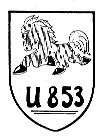
The U-853 claimed the last victim of the Atlantic war in US waters, and then became the last U-boat sunk in US waters - all after the official end of the war. Either her captain never got the news, or he didn't care. Towards the end of the war, when most of the older commanders had been lost, U-boats were often captained by youthful ( brainwashed ) Nazi fanatics, a number of whom fought on even after the surrender.
In any case, we'll never know, as a Navy task force that happened to be in the area turned their full attention to the situation, and sank the U-853 in short order, with all hands lost. In fact, they did enough damage to sink her several times over. Today the sub lies intact and upright on the bottom, with two large blast holes in the hull. The first is just forward of the conning tower, with a diameter equal to the width of the hull. The second is of similar size near the stern. It is easy to drop down into either hole and look around, but penetrating further into the confines of the hull would be much more difficult.
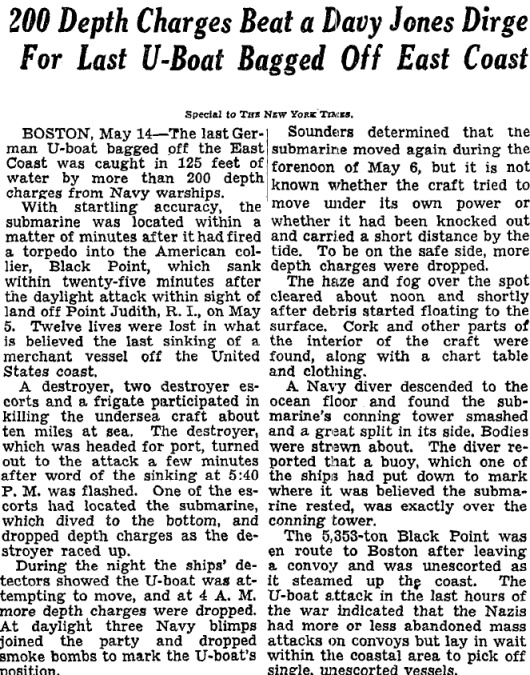
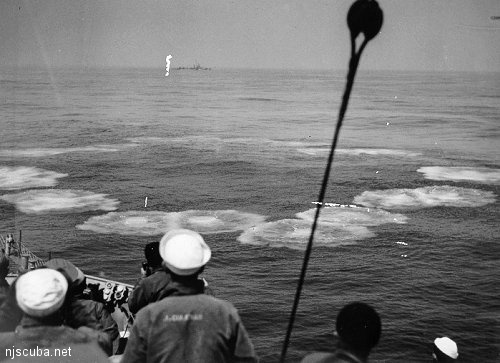
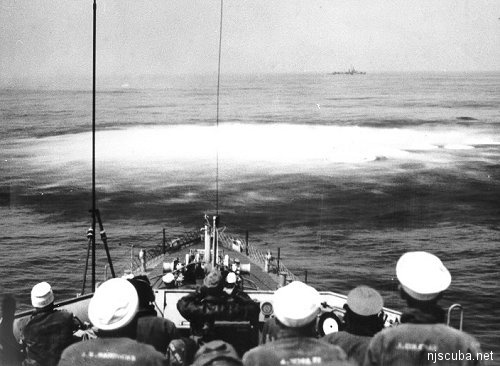
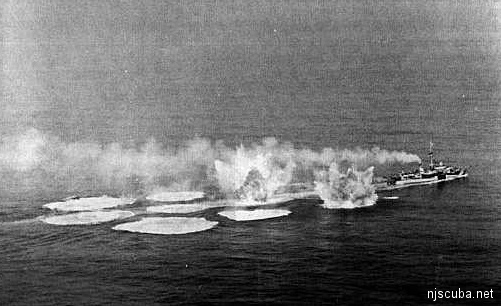
Incredibly, the Atherton served as the Philippines' BRP Rajah Humabon until 2018, largely unchanged from her WWII fit-out.
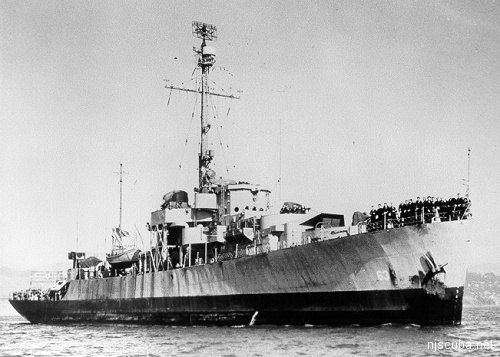
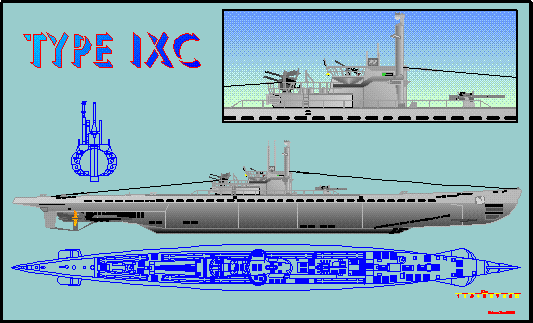
In early 1945, the U-853, a Type IX c/40 U-boat, was ordered to patrol the waters off the northeast coast of the U.S. along with six other U-boats to harass coastal shipping in an operation code-named "Seewolf." She departed on 23 February 1945 under the command of Oberleutnant zur See Helmut Fromsdorf. U-853 apparently had little success during the intervening weeks before attacking and sinking the patrol boat USS Eagle 56 on 23 April 1945 off Portland, Maine. On 30 April Adolf Hitler committed suicide and the former head of Germany's U-boat fleet, Gross Admiral Karl Donitz, became the Third Reich's second fuhrer. On 4 May he ordered, by radio, all of his U-boats, especially the 49 still on patrol at sea, to cease hostilities.

The U-853, by this time patrolling off of Rhode Island, probably did not receive Donitz's order or, less likely, deliberately chose to ignore it. The following day, 5 May 1945, the U-boat located, tracked, and torpedoed the steamer S.S. Black Point off Narragansett Bay. The Black Point sank, taking 11 of her crew with her. A passing vessel sighted the U-853 and reported to the authorities. With the sinking of the Black Point and the U-boat sighting in hand, the Navy quickly organized an ad-hoc "hunter-killer" group from readily available escorts. These were the destroyer USS Ericsson, destroyer escorts Atherton and the Amick, with the commanding officer of Ericsson taking overall command. The Coast Guard-manned frigate Moberly was also assigned to the group.
Moberly arrived in the area of the Black Point's sinking first, and the two destroyer escorts arrived soon thereafter. The Moberly's commanding officer, LCDR Leslie B. Tollaksen, USCG, took tactical command. The three warships then formed a patrol line abreast and began searching out to sea. The Atherton made a sound contact five miles east of Grove Point, Block Island, and attacked with hedgehogs. After the third attack, the Atherton lost contact with the target. Three hours later, with each escort following a prescribed search pattern, the Atherton once again obtained a sonar contact. Once again she attacked, and this time the U-853 was hit. Oil began seeping to the surface while the Moberly also began attacking. Debris rose to the surface, including a German naval officers' hat and a piece of a chart table, indicating that the U-boat was severely damaged or destroyed. The Ericsson soon arrived in the area and each warship took turns attacking the now cornered U-853 throughout the night and into the morning of 5 May. Divers later confirmed the kill.
from Coast Guard records



Outside the wreck, the deck and coamings around the cylindrical pressure hull have rusted away, revealing the myriad pipes and supporting frames beneath. The pressure vessel of the conning tower is all that remains, not quite the same shape as the drawing above. The conning tower is topped with a shiny stainless steel spike, perhaps a radio aerial.
Fish life is almost exclusively cunners, with a few Sea Ravens and Ling. Conditions tend to be dark and often murky. The wreck is a war grave, and any human remains found inside must not be disturbed.
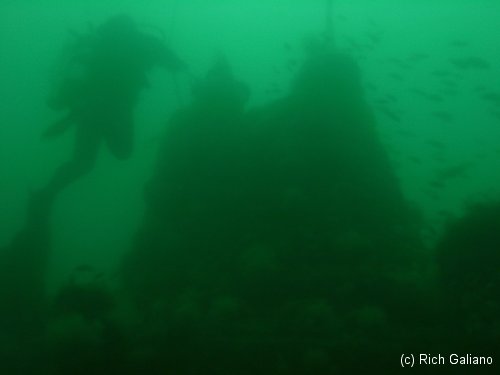
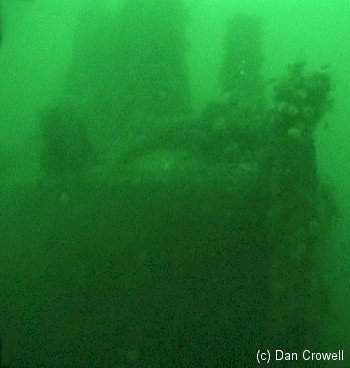
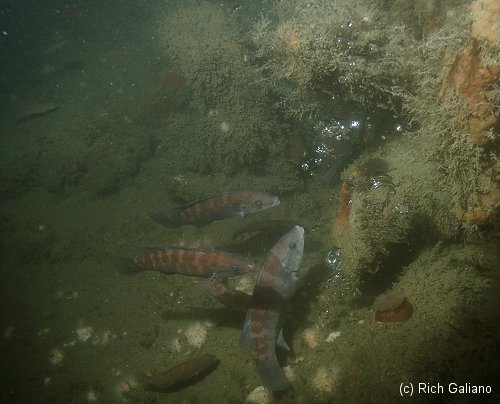
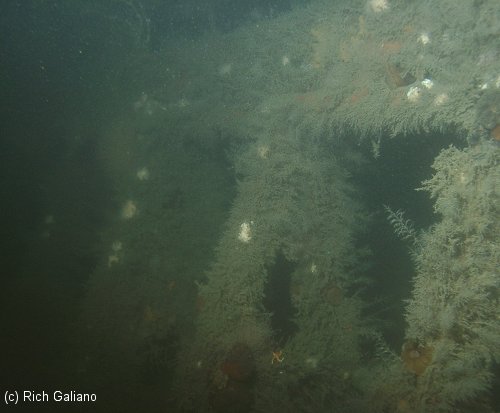


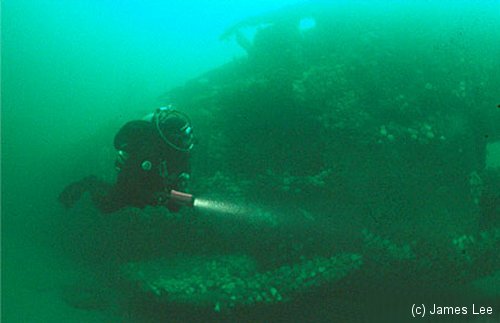

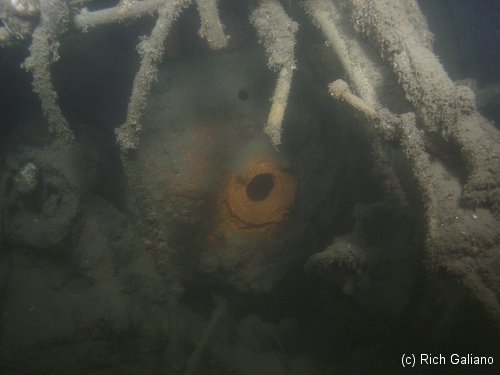
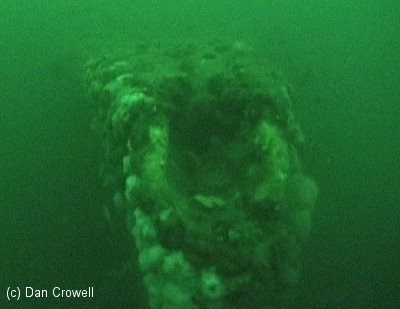
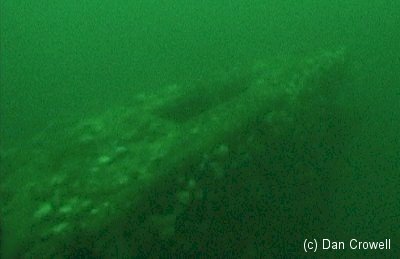
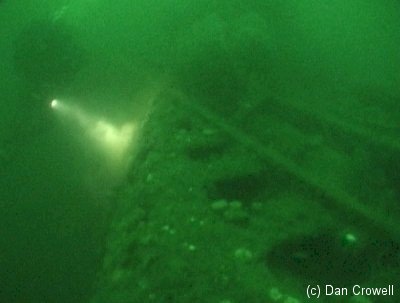

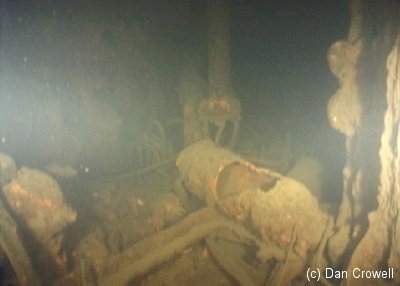

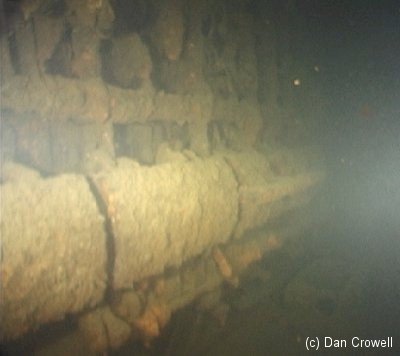


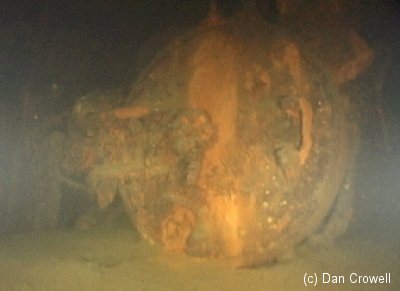
Courtesy of Dan Crowell
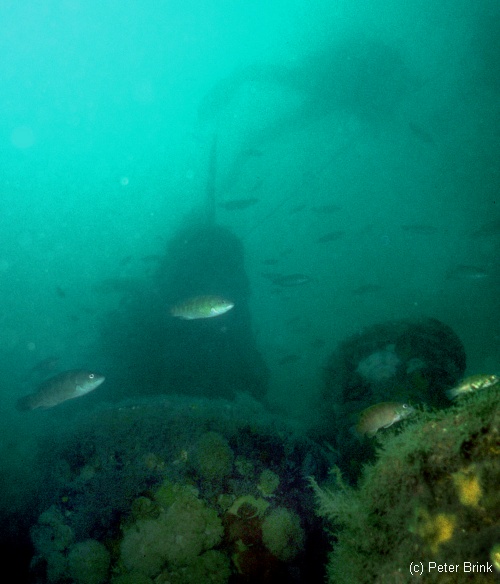
Underwater photographs courtesy of James Lee / DeepScape.com.

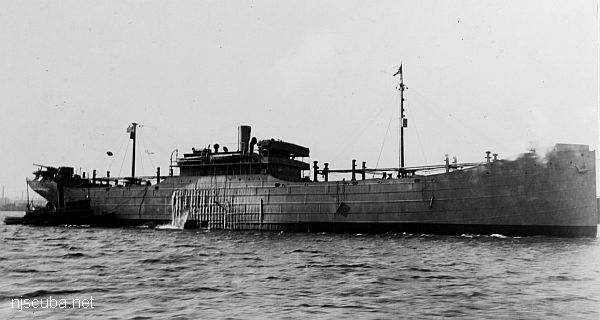
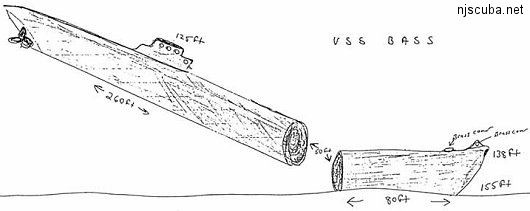

Questions or Inquiries?
Just want to say Hello? Sign the .